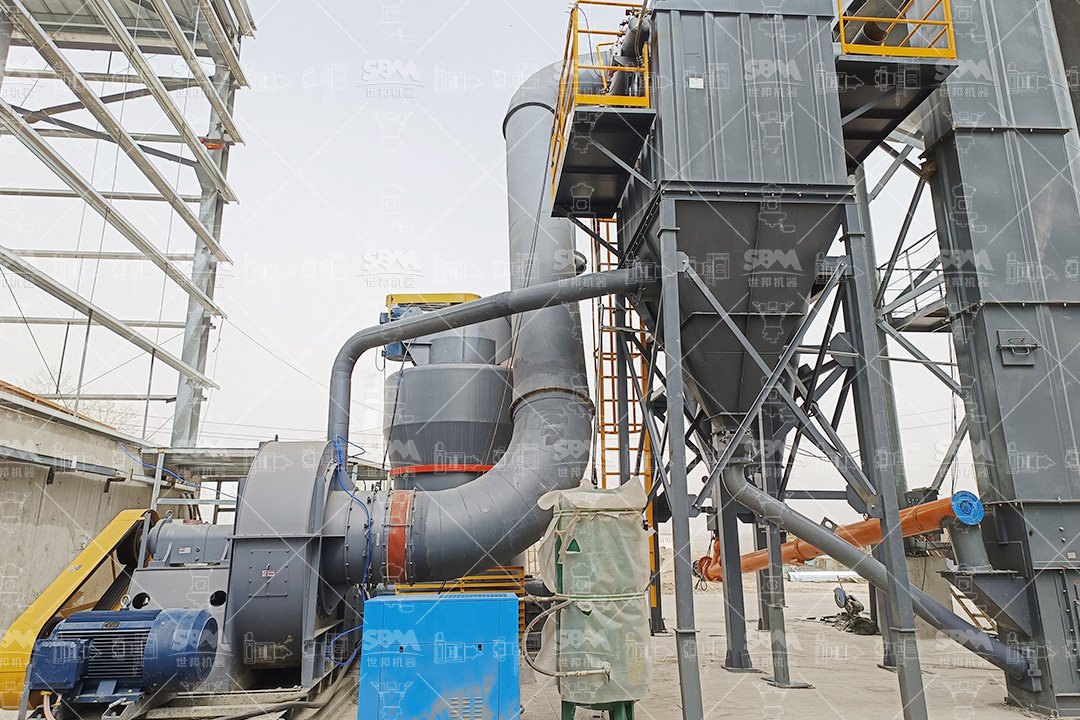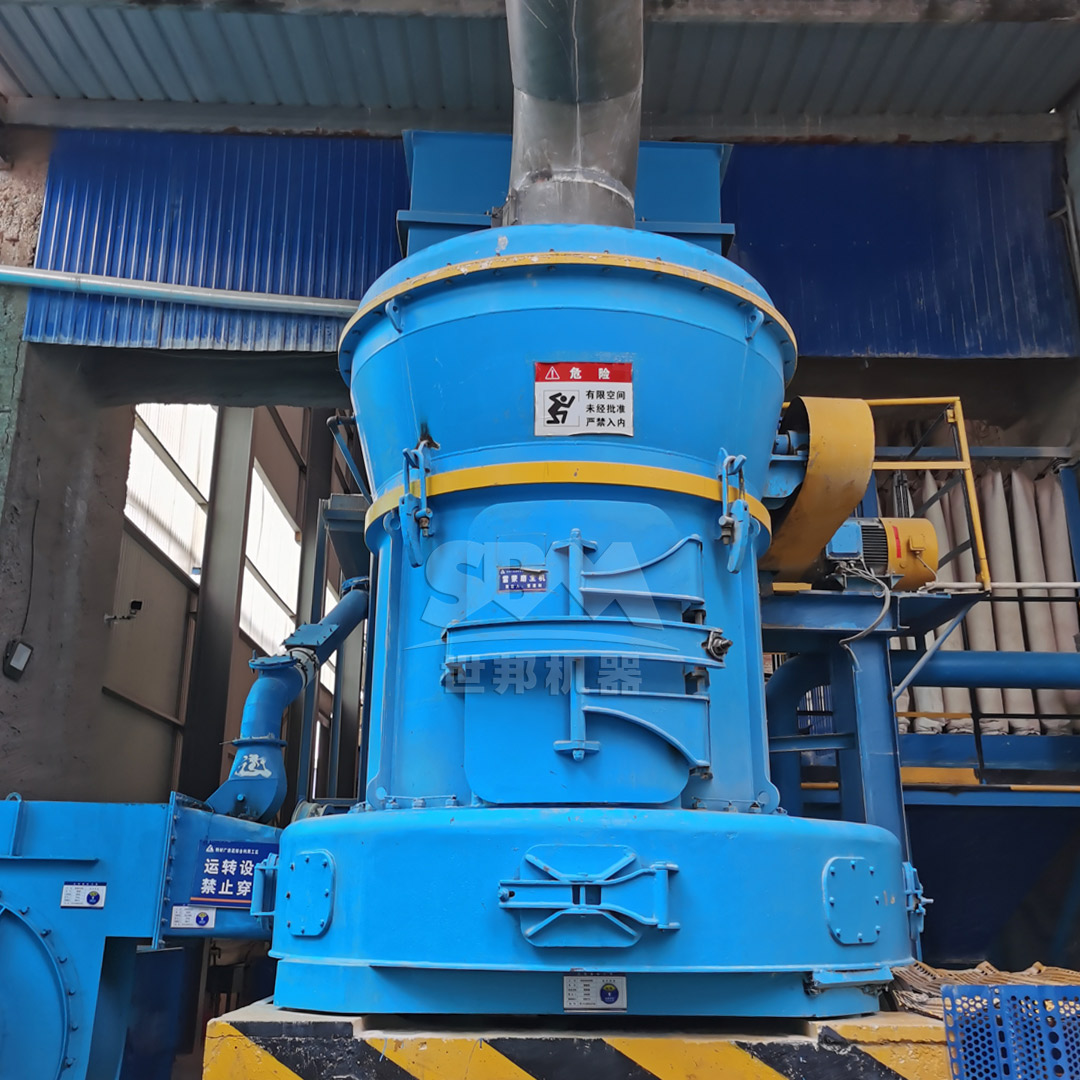Barite (barium sulfate) is a mineral of significant industrial importance, primarily valued for its high specific gravity (4.2-4.5) and chemical inertness. The petroleum industry consumes approximately 90% of global barite production as a weighting agent in drilling muds, where it prevents blowouts by controlling formation pressure. Beyond drilling applications, barite finds extensive use in environmental protection, paint and coatings, plastics, medical imaging, and radiation shielding.
The effectiveness of barite in these applications depends critically on its particle size distribution and purity. For drilling mud applications, the American Petroleum Institute (API) specifies that at least 97% of barite particles must pass through a 75μm (200-mesh) screen and at least 80% through a 45μm (325-mesh) screen. Finer grinding enhances the suspension properties and prevents barite settling in drilling fluids. Environmental applications often require even finer particles to increase surface area for chemical reactions or to create more effective barriers.

Effective barite processing requires specialized equipment capable of achieving precise particle size distributions while maintaining the mineral’s chemical properties. The grinding system must handle the abrasive nature of barite while producing consistent output with minimal contamination. Key technical considerations include:
Barite presents several grinding challenges due to its moderate hardness (3-3.5 on Mohs scale), brittleness, and specific gravity. The high density requires specialized conveying and classification systems, while the abrasive nature accelerates wear on grinding components. Additionally, overheating during grinding can affect the crystal structure and performance properties.
Modern barite processing facilities employ various grinding technologies, each with distinct advantages for specific applications and production requirements. The selection of appropriate grinding equipment depends on the target particle size, production capacity, and operational constraints.
For applications requiring extremely fine barite powders (D97 ≤ 5μm), such as high-performance coatings, specialty plastics, and advanced composites, ultrafine grinding systems offer unparalleled precision. Our SCM Ultrafine Mill represents the pinnacle of this technology, specifically engineered to meet the demanding requirements of modern barite processing.
The SCM series achieves remarkable fineness levels of 325-2500 mesh (45-5μm) while maintaining high production efficiency. With capacity ranging from 0.5 to 25 tons per hour across different models, this system combines German grinding technology with Chinese manufacturing expertise. The vertical turbine classifier ensures precise particle size control, eliminating coarse particle contamination in the final product.
| Model | Processing Capacity (t/h) | Main Motor Power (kW) | Feed Size (mm) | Final Fineness (mesh) |
|---|---|---|---|---|
| SCM800 | 0.5-4.5 | 75 | ≤20 | 325-2500 |
| SCM900 | 0.8-6.5 | 90 | ≤20 | 325-2500 |
| SCM1000 | 1.0-8.5 | 132 | ≤20 | 325-2500 |
| SCM1250 | 2.5-14 | 185 | ≤20 | 325-2500 |
| SCM1680 | 5.0-25 | 315 | ≤20 | 325-2500 |
Technical Advantages of SCM Ultrafine Mill:
For medium to large-scale barite processing operations requiring outputs in the 30-325 mesh range, the MTW Series Trapezium Mill offers robust performance and operational efficiency. This European-style grinding system incorporates multiple technological innovations that make it ideal for barite processing in both drilling mud and environmental applications.
The MTW series handles feed materials up to 50mm in size and delivers production capacities from 3 to 45 tons per hour. Its curved air duct design minimizes energy loss while the wear-resistant volute structure reduces maintenance costs by 30%. The integral transmission with bevel gears achieves 98% transmission efficiency, significantly reducing power consumption.

The petroleum industry’s dependence on barite as a weighting agent in drilling fluids creates stringent quality requirements. Properly ground barite must maintain specific gravity above 4.2, contain minimal soluble alkaline earth metals, and exhibit optimal particle size distribution to prevent sagging in drilling muds.
Research demonstrates that barite particles between 10-74μm provide the ideal balance between suspension stability and rheological properties. Particles finer than 10μm increase viscosity excessively, while coarser particles tend to settle rapidly. Our grinding systems are precisely calibrated to maximize the percentage of particles within this optimal range.
The MTW Series Trapezium Mill particularly excels in drilling mud barite production, delivering the 30-325 mesh product that perfectly matches API specifications. Its anti-wear shovel design and combination shovel plates significantly reduce maintenance costs in continuous operations, while the弧形风道优化 (curved air duct optimization) enhances transmission efficiency.
Beyond drilling applications, finely ground barite serves critical functions in environmental protection. The high density and chemical stability make it ideal for various containment and remediation applications.
Finely ground barite forms effective barriers against heavy metal migration in contaminated sites. When compacted, barite creates low-permeability layers that prevent leaching of lead, chromium, and other toxic metals into groundwater. The efficiency of these barriers increases with decreasing particle size due to enhanced packing density.
Barite’s high density and barium content make it effective for radiation shielding in medical facilities, nuclear plants, and laboratories. Finely ground barite is incorporated into concrete, polymers, and composites to create protective barriers. The SCM Ultrafine Mill produces barite powders ideal for these applications, where homogeneous distribution in matrix materials is critical.
Barite nanoparticles effectively remove sulfates and heavy metals from industrial wastewater through precipitation and co-precipitation mechanisms. The large surface area of ultrafine barite enhances reaction kinetics and treatment efficiency.

Choosing the appropriate grinding system depends on multiple factors including target particle size, production capacity, available space, and budget constraints. The following guidelines assist in selecting optimal equipment for specific barite processing requirements.
| Application | Recommended Fineness | Preferred Equipment | Capacity Range | Key Considerations |
|---|---|---|---|---|
| Drilling Mud (API Standard) | 30-325 mesh | MTW Series Trapezium Mill | 3-45 t/h | Consistent particle distribution, low iron contamination |
| High-Grade Drilling Mud | 200-325 mesh | SCM Ultrafine Mill | 0.5-25 t/h | Enhanced suspension properties, reduced settlement |
| Paint & Coatings | 325-1250 mesh | SCM Ultrafine Mill | 0.5-25 t/h | Brightness, dispersion, gloss control |
| Plastics & Rubber | 600-2500 mesh | SCM Ultrafine Mill | 0.5-25 t/h | Surface treatment compatibility, mechanical properties |
| Environmental Barriers | 200-400 mesh | MTW Series Trapezium Mill | 3-45 t/h | Packing density, permeability control |
| Radiation Shielding | 325-2500 mesh | SCM Ultrafine Mill | 0.5-25 t/h | Homogeneous distribution, maximum density |
Successful barite grinding operations require attention to several critical factors beyond equipment selection. Proper feeding, moisture control, and system integration significantly impact overall efficiency and product quality.
Barite feedstock should be pre-crushed to the appropriate size for the selected grinding system. Jaw crushers or hammer mills typically reduce run-of-mine barite to the 0-20mm or 0-50mm required for ultrafine and trapezium mills, respectively. Consistent feed size distribution ensures stable operation and optimal grinding efficiency.
Most grinding systems perform optimally with feed moisture below 5-6%. Higher moisture content causes material adhesion, reduced throughput, and classification challenges. When processing high-moisture barite, pre-drying systems or mills with integrated drying capabilities may be necessary.
Complete barite grinding plants incorporate multiple components beyond the core grinding mill:
Modern barite grinding technologies deliver significant advantages in both economic performance and environmental compliance compared to traditional approaches.
Advanced grinding systems like the SCM Ultrafine Mill and MTW Trapezium Mill reduce operating costs through:
Contemporary grinding equipment incorporates multiple environmental protection features:
The barite grinding industry continues to evolve with emerging technologies and changing market demands. Several trends are shaping the future of barite processing equipment and applications.
Integration of IoT sensors, data analytics, and machine learning enables predictive maintenance, optimal process control, and remote operation. Modern grinding systems increasingly feature comprehensive digital interfaces and connectivity options.
Energy efficiency, water conservation, and emission reduction drive equipment design innovations. The latest grinding systems minimize environmental impact while maximizing resource utilization.
Growing demand for ultrafine and surface-modified barite in advanced composites, nanotechnology, and specialty chemicals creates opportunities for specialized grinding solutions capable of producing tailored products with specific properties.
Barite grinding technology has advanced significantly to meet the demanding requirements of both traditional drilling applications and emerging environmental uses. The selection of appropriate grinding equipment—whether the high-precision SCM Ultrafine Mill for superfine applications or the robust MTW Series Trapezium Mill for standard drilling mud production—critically impacts product quality, operational efficiency, and economic viability.
As global demand for barite continues across multiple industries, investing in modern, efficient grinding technology becomes increasingly essential for producers seeking to maintain competitiveness while meeting stringent environmental standards. The continued evolution of grinding systems promises even greater efficiency, precision, and sustainability in barite processing for years to come.